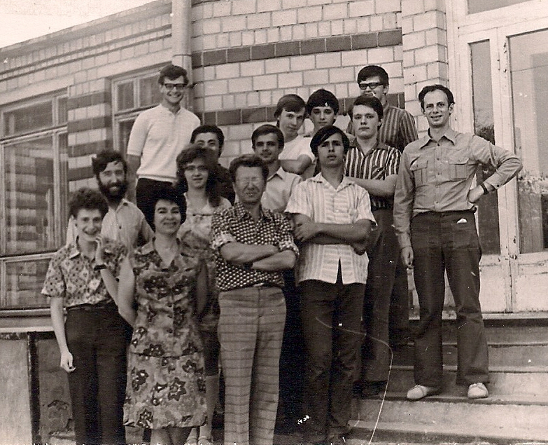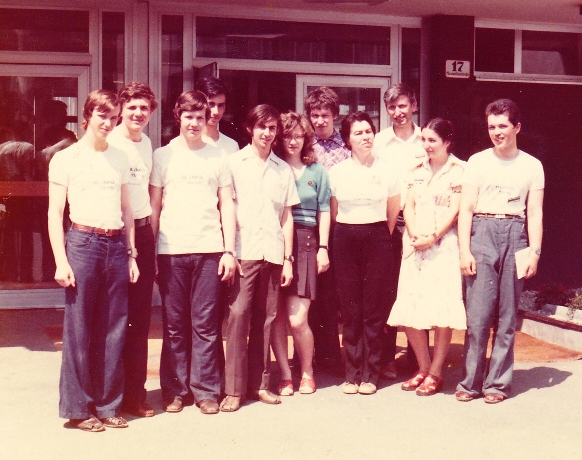My 1975 IMO Team

I just got this picture from my friend Victor Gutenmacher, which I never saw before. My 1975 IMO team is posing at our training grounds before the Olympiad trip to Bulgaria.
Left to right: Boris Yusin, Yuri Ionin, Zoya Moiseyeva (front), Gregory Galperin (back), me, Ilya Yunus, Valentin Skvortsov, Aleksandr Kornyushkin, Sergei Finashin, Sergei Fomin (front), Alexander Reznikov (back), Yuri Shmelev (front), Yuri Neretin (back), Victor Gutenmacher.
Our coaches are in the shot as well. Surprisingly, or not surprisingly, all of them moved to the USA. Yuri Ionin, now retired, was a professor at Central Michigan University. Gregory Galperin is a professor at Eastern Illinois University. Sergei Fomin is a professor at the University of Michigan. Victor Gutenmacher worked for BBN Technologies and Siemens PLM Software, and is now retired.
There are two more adults in the picture: Valentin Anatolievich Skvortsov, our leader and Zoya Ivanovna Moiseyeva, our deputy leader. Skvortsov was working at the math department of Moscow State University at that time. The University was angry that he didn’t block some students with Jewish heritage from the team thus allowing them to be accepted to Moscow State University without exams. I wrote a story of how Zoya persuaded Alexander Reznikov not to go to Moscow University to help Valentin. It ruined Alexander’s live, and didn’t even help Valentin. 1975 was Valentin’s last trip as the leader.
Share: